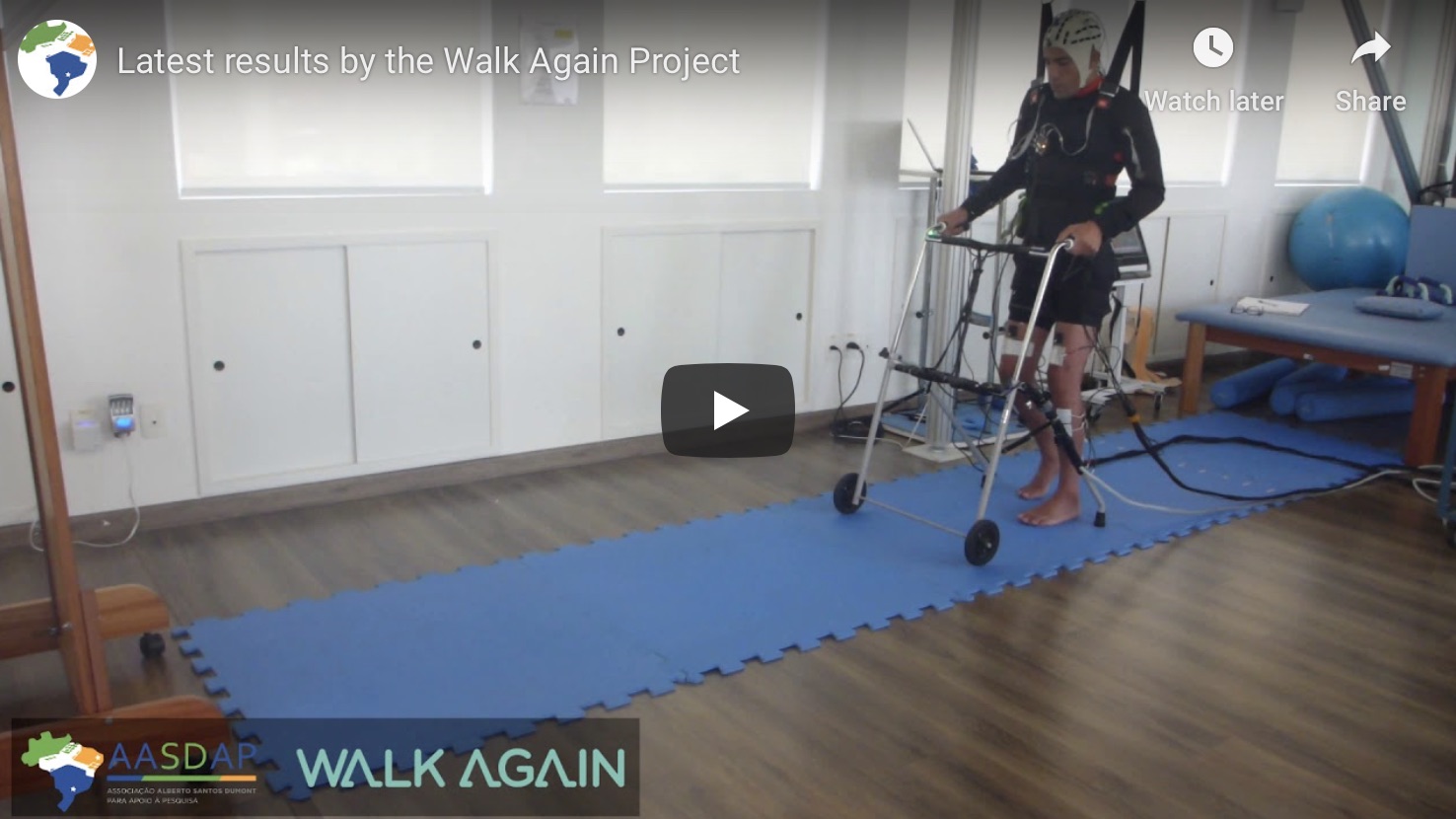Two patients with long-term paralysis have walked over 4,500 steps with the help of a walker, as part of a new pilot study led by brain-machine interface pioneer Dr. Miguel Nicolelis at Duke University, in North Carolina, USA.
The program involved the employment of a fully non-invasive brain-machine interface and functional electrical stimulation.
Patient P1 was a middle-aged man paralysed for 4.5 years at the onset of the study. P2, a 32-year-old, had been paralysed for a decade.
The brain-boosting program kicked their damaged nervous systems back into action, restoring some neurological recovery in both patients along with bladder, bowel, and sexual control.
Both patients also experienced improvements in their cardio health and a drop in resting heart rate.
This video about the project, which was posted on the AASDAP YouTube channel, shows how the neuro-rehabilitation protocol worked.
“Our hypothesis is that, after a spinal injury, some spinal cord fibers may have survived, but they may not have been activated for years,” said study author Solaiman Shokur.
“Our system makes it possible to stimulate them again,” he added.
“We believe that combined brain and spinal cord plasticity are essential agents in our study,” the team said.
“By urging the nervous system to health itself, it’s clear that partial neurological and functional recovery can be induced in chronic spinal cord injury patients,” the team added.
The Walk Again Project, a non-profit international consortium, aims at developing new neuro-rehabilitation protocols, technologies, and therapies for spinal cord injury.
The study was funded by the Brazilian Financing Agency for Studies and Projects and the Brazilian Ministry of Science, Technology, and Innovation.
The Alberto Santos Dumont Association for Research Support (AASDAP) is a private non-profit institution created in April 2004 to manage public and private resources for the implementation of social projects and scientific studies.
Read the full story here: SingularityHub – How Two Paralyzed Patients Walked Again Without Surgery
The study is published in Scientific Reports.

